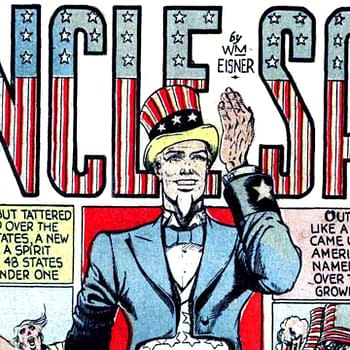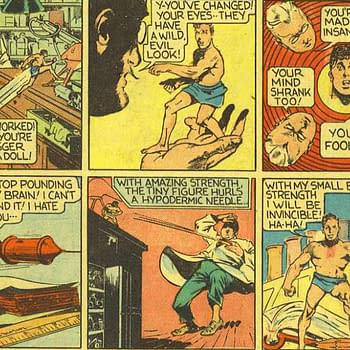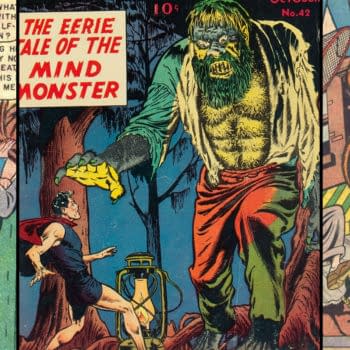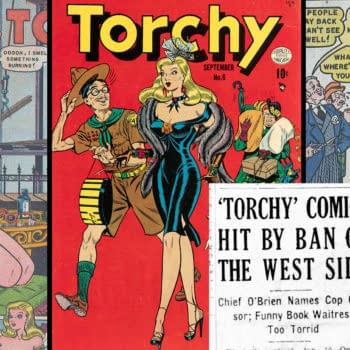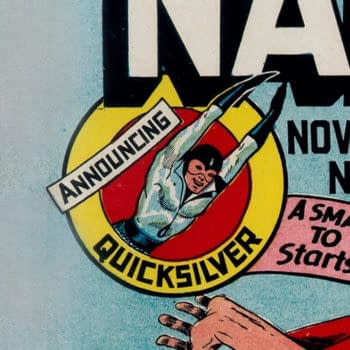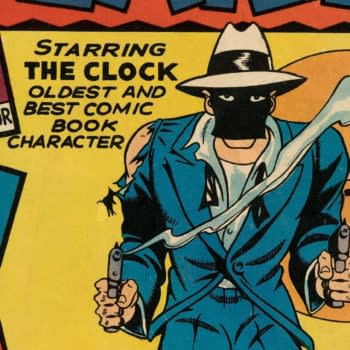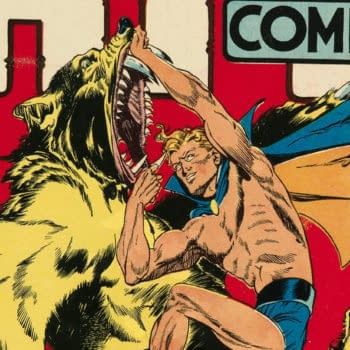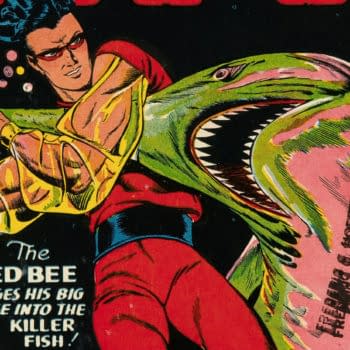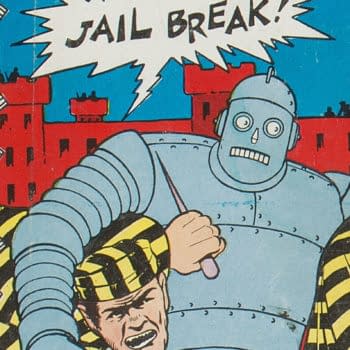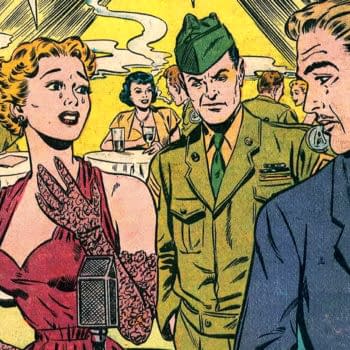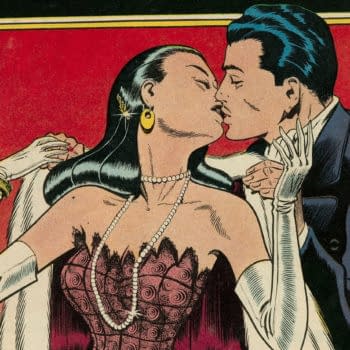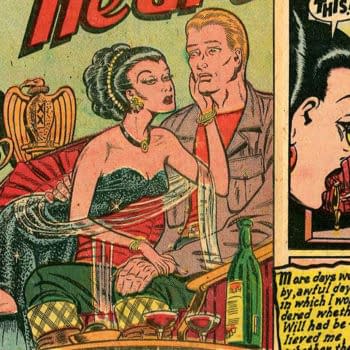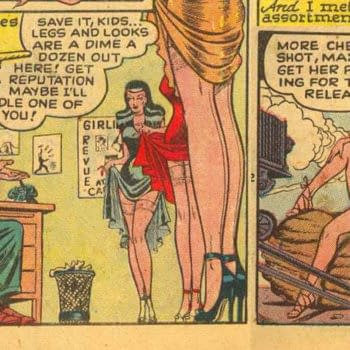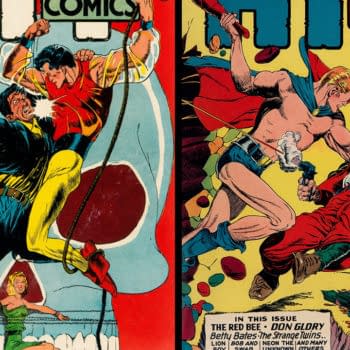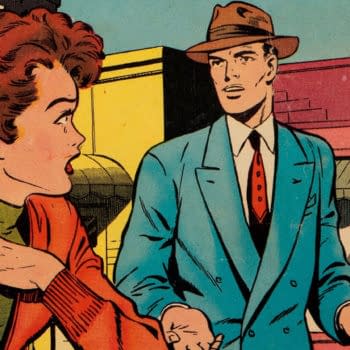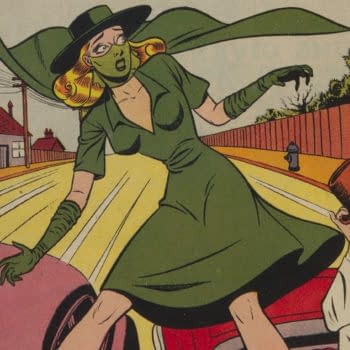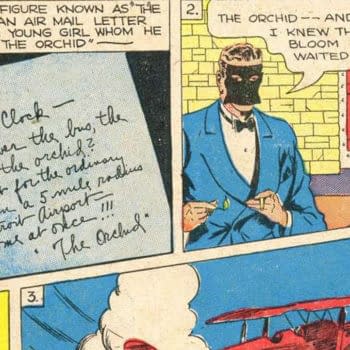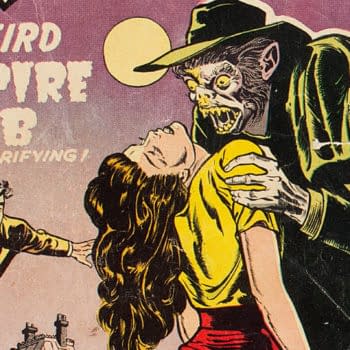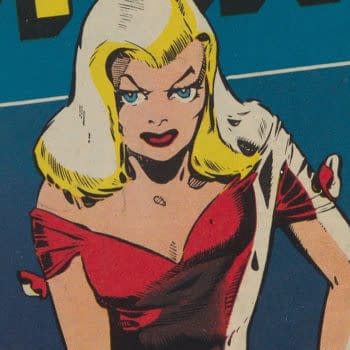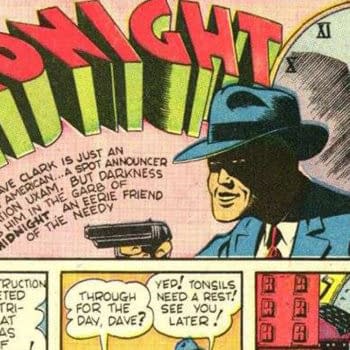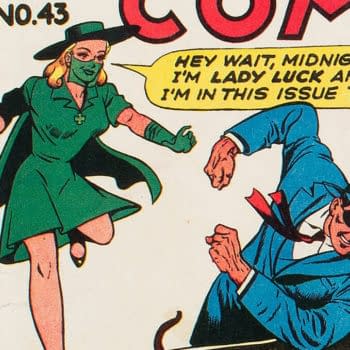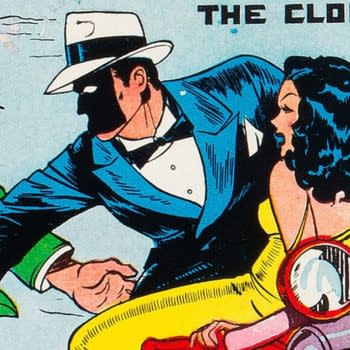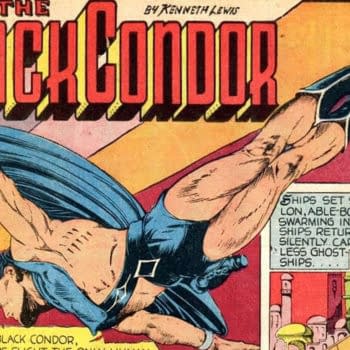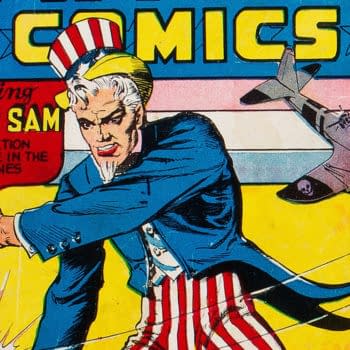After Quality Comics folded in 1956, its characters, including Kid Eternity, were acquired by DC Comics. Kid Eternity was featured in a memorable 1991 Vertigo mini-series by Grant Morrison and Duncan Fegredo. There are only 25 copies of Hit Comics #25 on the CGC census, with only 20 of those designated "Universal" or unrestored. There are only[...]
quality comics Archives
But such origin stories changed with the times. Fifteen years later, a completely different explanation of the name made the rounds, and these were certainly not the only theories. It's unlikely that the 1830 era version of the matter is correct — even though it has largely come to be the accepted history in recent[...]
Considered the first shrinking superhero in comics and Quality Comics' first super-powered character, Doll Man debuted in a four-page origin story by Will Eisner in Feature Comics #27. Like many publishers in 1939, Quality Comics publisher Busy Arnold was testing the waters of the emerging trend, and this issue was near ground zero of the[...]
There's something undefinably unique about Quality Comics from the post-WWII era The material was created by a range of stand-outs including artwork by the likes of Reed Crandall, Bill Ward, Gill Fox, and others, plus scripts by William Woolfolk and more, but it was all tied together by editor Al Grenet, who was an artist[...]
The character made her comic book debut in Doll Man #8 (cover-dated Spring 1946), appearing at Quality Comics in Doll Man, Modern Comics, and her own short-lived Torchy title.
According to a 1979 article in Jim Steranko's Mediascene magazine, the Torchy series was scripted by Gwen Hansen, a Quality Comics writer and editor who also worked[...]
National Comics #5 is known for its stand-out Lou Fine cover and for its interior story featuring the expanded origin of the Quality Comics version of Uncle Sam. In addition to work by Fine and Will Eisner, the issue features Golden Age greats like Blue Beetle creator Charles Nicholas Wojtkoski, Toni Blum, George Tuska, Dan[...]
A little-remembered and unassuming title that was launched in 1940 by publisher Quality Comics, Crack Comics took over the continuing adventures of one of the most important characters in comic book history The Clock was the first masked hero of the Golden Age, who eventually led the way for later iconic characters such as Batman[...]
His iconic cover for Hit Comics #5 is a key moment from the Red Bee story in that issue, for example. We've also seen that such covers sometimes ended up on the wrong issue, perhaps most famously on Fantastic Comics #3, where the legendary cover matches the story from Fantastic Comics #4. Such switch-ups were[...]
Despite working on and co-creating numerous characters now considered obscure, Lou Fine was considered one of the best artists of the Golden Age. He was an artist that even other comic book greats admired, and his cover work for publishers Fox Feature Syndicate, Fiction House, and Quality Comics is still highly regarded by collectors to[...]
Bozo's adventures provided a foundation for other robotic and mechanical heroes of the Golden Age and beyond, ultimately helping to foster an enduring fascination with mechanized characters within the comic book genre.
Bozo's creator George Brenner, who worked extensively with Quality Comics, eventually held the position of Executive Editor and produced unique comic book characters for[...]
The Korean War era combined with the post-WWII concerns of the Cold War to transform war comic books into their own distinct genre that lasted for decades, and like other genres, war comics often had specific themes. For example, the nature of war and the impact of service on relationships made for natural romance-war genre[...]
Bill Ward's cover for Broadway Romances #1 is one of the best romance covers Quality Comics published during its 1949-1956 romance era. Best remembered for his character Torchy, Ward was well suited for the romance genre, during this period likely worked on at least 200 comic books at Quality, at least half of those romance. [...]
At the dawn of the Cold War era, a significant portion of the comic book industry's output shifted from fighting Nazis to fighting Communists. There is perhaps no more obvious example of this than Marvel's reboot of comics' most famous Nazi, the Red Skull, as a Communist for the brief mid-1950s revival of the core[...]
Hollywood Secrets #1 with cover and art by Bill Ward features tales of romance inspired by the scandal tabloids of the era.
Lou Fine was considered one of the best artists of the Golden Age, and it's easy to see why. He could handle any subject matter with ease, including superheroes, science fiction, fantasy, pulp action, and anything else that was thrown at him. Some characters and title runs might now be considered obscure, except that Lou[...]
Blackhawk is the star of the long-running war comic book series first published by Quality Comics in 1941 and later by DC Comics Created by Chuck Cuidera with Bob Powell and Will Eisner, Blackhawk and the rest of the team first appeared in Military Comics #1 before later getting their own title in 1944 with[...]
Kid Eternity first appeared in Hit Comics #25, created by Otto Binder and Sheldon Moldoff, and published by Quality Comics in 1942, featured on the cover of subsequent issues and gained his own series in 1946 His antagonists, Her Highness and Silk also got their own strip in Hit Comics #29 through #57.
Kid Eternity was[...]
Legendary artist Matt Baker edged into contributing to the Quality Comics romance line at a pivotal moment in his career. Most of his comic book output had been for publisher St John Publications 1949-1955, but his assignments for St John took an abrupt dip in early 1954. It's likely that in the wake of the[...]
Despite working on and co-creating numerous characters now considered obscure, Lou Fine was considered one of the best artists of the Golden Age. He was an artist that even other comic book greats admired, and his cover work for publishers Fox Feature Syndicate, Fiction House, and Quality Comics is still highly regarded by collectors to[...]
In 1949, historic Golden Age Quality Comics flagship title Smash Comics was taken over by the long-running character Lady Luck.
The character was created by George Brenner and first appeared from publisher Comics Magazine Company in Funny Pages #v1#6 and Funny Picture Stories #1, both cover-dated November 1936. These issues hit newsstands 18 months before Superman's debut in Action Comics #1, and The Clock anchored a little-known attempt to do comic book-like comic sections for[...]
1950 was a turning point of sorts for publisher Quality Comics. Everett "Busy" Arnold bought out his longtime partners in the business John Cowles, Sr and Gardner Cowles, Jr not too long after the comic book industry had shifted from a focus on superheroes to a variety of other material. Long-running Golden Age titles like Smash[...]
Considered one of the most historically important bodies of work in American comic book history, The Spirit was created by Will Eisner as a masked adventurer whose exploits ranged from detective stories and drama to horror, romance, and even comedy. The character debuted as a feature in the tabloid-sized newspaper insert (subsequently popularly called "Spirit[...]
The first woman to be part of the Blackhawk team, the character in Military Comics #20 is widely regarded as the Golden Age Lady Blackhawk.
The experimental "strato-balloon" voyage that gave the Ray his powers was inspired by real scientific experiments to study cosmic rays.
Quality Comics was reportedly reluctant to publish a comic book version of The Spirit at first because the character was creator-owned by Will Eisner If something happened to Eisner during WWII, the thinking apparently went, the character could not be continued by someone else Jack Cole, best remembered for his creation of Plastic Man, was[...]
Lady Luck's comic book cover debut by Reed Crandall on Quality's Smash Comics is surprisingly tough to come by in any condition.
The character debuted from publisher Comic Magazine Company, who sold it to Quality Comics, where he appeared in the Crack Comics series The Clock was created by George Brenner and first appeared in Funny Pages #v1#6 and Funny Picture Stories #1, both cover-dated November 1936 Brenner's creation predated well-known early superheroes such as Batman and[...]
Fine was an artist that even other comic book greats admired, and while his cover work for publishers Fox Feature Syndicate, Fiction House and Quality Comics is highly regarded by collectors, his interior story artwork is sometimes overlooked The early Black Condor stories in Crack Comics were as much fantasy stories as they were about[...]
But such origin stories changed with the times. Fifteen years later, a completely different explanation of the name made the rounds, and these were certainly not the only theories. It's unlikely that the 1830 era version of the matter is correct — even though it has largely come to be the accepted history in recent[...]



